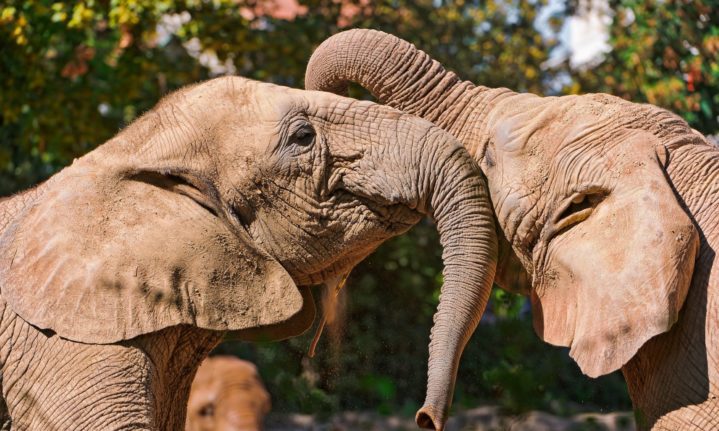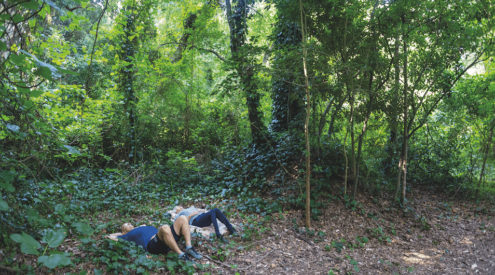Ever wondered why it’s so fun to just fool around with toys or sports equipment when we have to pass the time, even as adults? As it turns out, playtime is an important aspect of sociality – and even learning survival skills – in the animal kingdom.
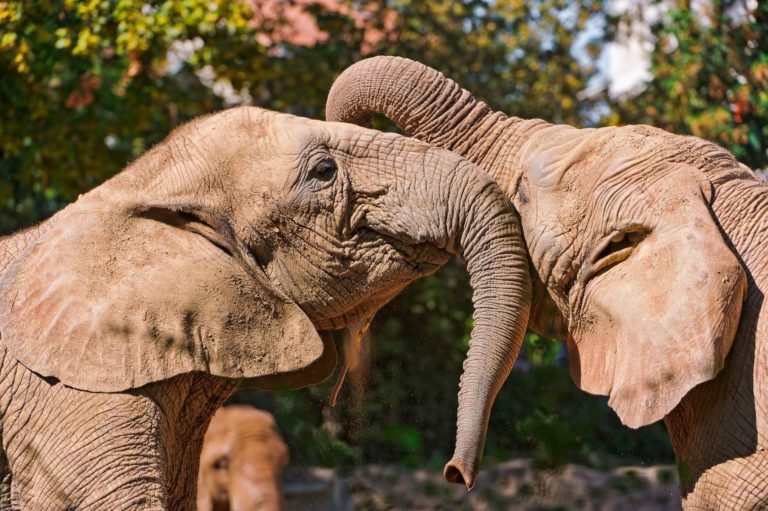
Elephant calves often raise their trunks as a gesture to play. Picture: Tambako The Jaguar/ Flickr Commons.
Caitlin O’Connell is a behavioural ecologist at Harvard Medical School who focuses on elephant behaviour and communication. She is also the author of the book Wild Rituals: 10 Lessons Animals Can Teach Us about Connection, Community, and Ourselves.
After observing elephants mucking about at a watering hole in Etosha, she said: ‘During these daily visits, I always learn a new lesson about elephants—particularly when they play.’
‘I have witnessed the important role of play in calf development and family politics by watching members of my favourite elephant groups frolic at this water hole at sunset. These often chaotic observations inspired me to want to understand more about how animals play and what advantages this behaviour might confer, not just to elephants but to all social creatures.’
So just what are the vital lessons animals learn when playing with each other?
Learning the rules
There’s an unwritten etiquette when it comes to playing among animals. This is familiar in the canine family, where a bow is a universal invitation for play.
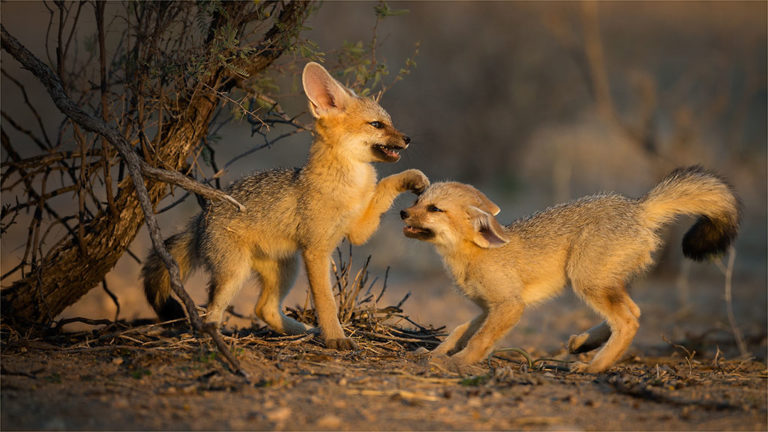
Two young Cape Foxes playing in the last rays of the evening sun in the Kgalagadi National Park. Picture: Hesté de Beer/ Getaway Gallery
O’Connell argues that play behaviours have evolved as ritualised forms of survival skills needed later in life, and play is the perfect time to hone them.
Young elephants tend to raise their trunks up as an invitation to another. The next move usually involves placing his trunk over the other’s head, which signals dominance in adults but among calves, it descends into a playful duel.
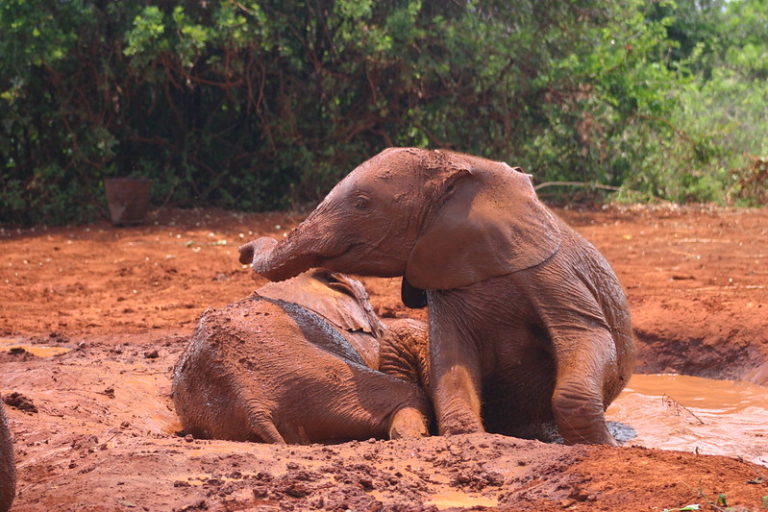
Fun in the mud, an important part of elephant upbringing. Picture: Joe Barbosa/ Flickr Commons.
These encounters can escalate with tusks clanging and heads butting, with the fun continuing into young adulthood. But the importance of these games is that it provides young bulls with the opportunity to test their fighting ability for when they reach their sexual maturity.
Social awareness
Scholars tend to identify two kinds of play: Social and locomotive. When it comes to social play, the friendly duels between youngsters provide them with the opportunity to test boundaries and see who can be trusted, as well as important cues regarding body language.
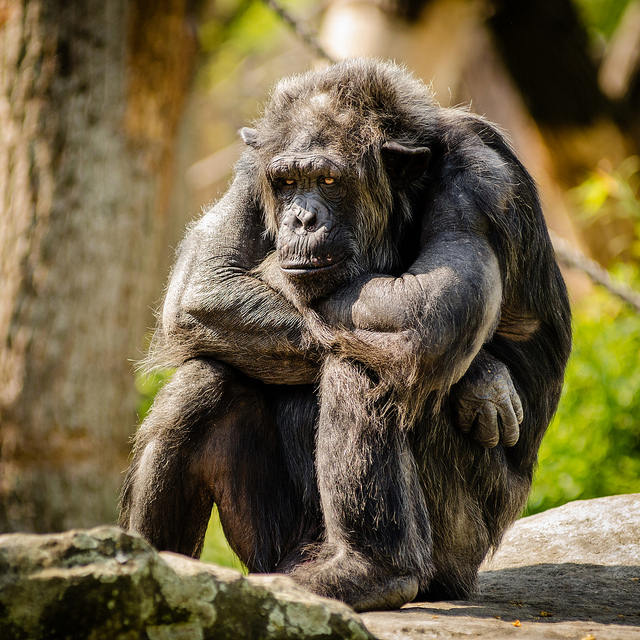
Chimpanzee facial expressions are important social cues, often learnt during playtime. Picture: Getaway Gallery
Professor of cognitive biology, Thomas Bugnyar, found that ravens pretend to store highly valued food and then watch how other ravens respond, apparently to determine who they can trust. This helps them to differentiate between competitors and collaborators.
O’Connell uses the example of chimpanzees and gorillas who also tend to play ‘make-believe’. A young chimpanzee sometimes carries around a log, pretending to nurse it as a small infant. She argues that this is the same as a child playing with an invisible toy or setting up a ‘barrier’; they want to be acknowledged in the social group.
They are also observed to motivate or encourage each other with facial expressions. Primatologists argue that showing their upper teeth is their ‘play face’, comparable to human laughter.
How to hunt, and not be hunted
Locomotive play usually takes the form of playful fighting or playing with objects. This is an important aspect of the development for predatory species, such as lion cubs who tend to play-hunt with insects, an important stepping stone in moving up to larger prey.

Playing fetch: Lions often entertain themselves by playing with objects. Picture: Francois van der Westhuizen/ Getaway Gallery
Play tends to help increase agility and to learn how to recover from a loss of balance. One example is when lions cubs give up control of their body, rolling over on their backs and allowing others to pounce. By putting themselves in a compromised position, the goal is not to win, but to improve.
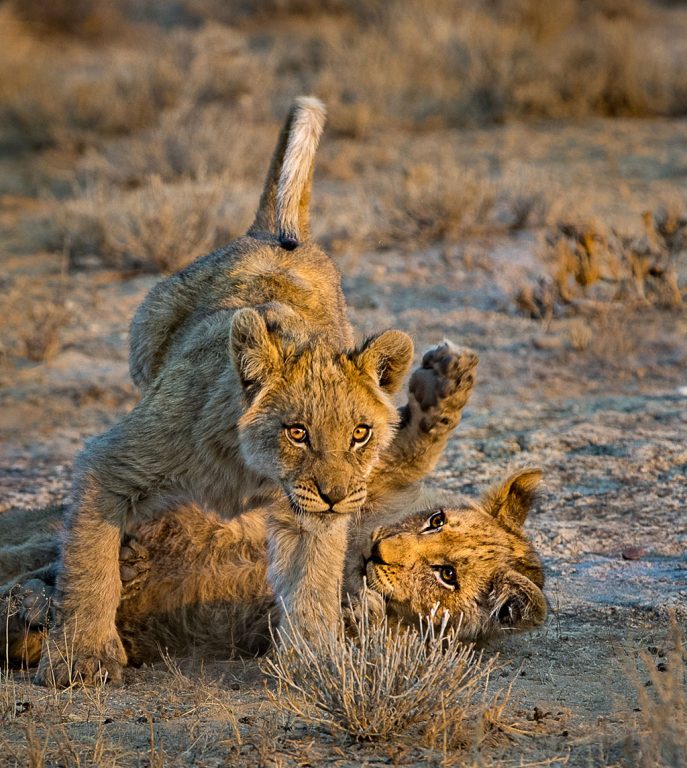
Picture: Annemarie du Plessis/ Getaway Gallery
When it comes to prey species, play serves the function of avoidance. Impala lambs are frequently seen chasing each other, which strengthens their muscles when they inevitably have to run for their lives.
With springboks, predator avoidance tactics take the form of pronking around in their characteristic way while running as a herd, learning how to spring and land in unpredictable spots.
ALSO READ
Wild dogs scour large rock in an attempt to reach klipspringers









